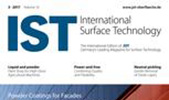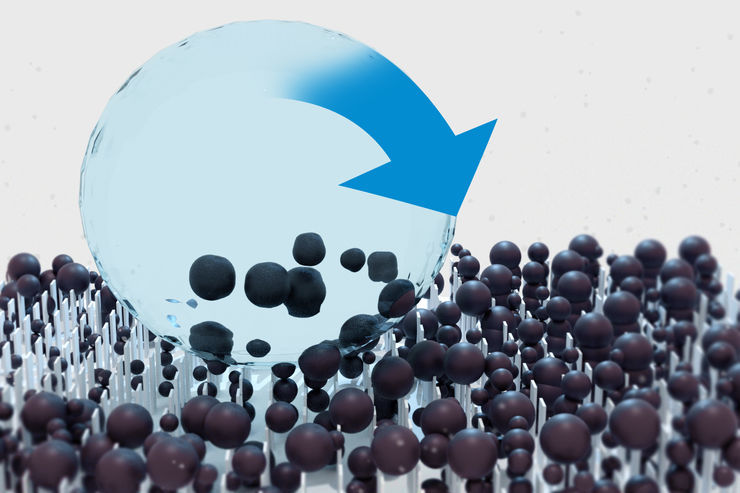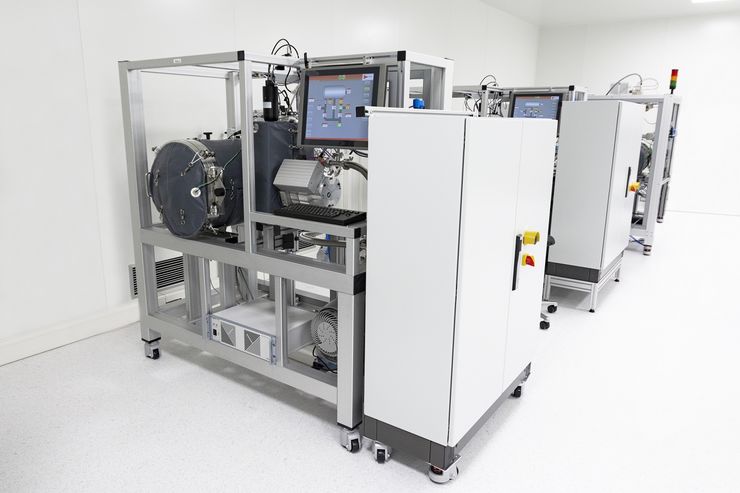All surfaces in our daily lives become dirty over time with particles such as dust, pollen or microorganisms. Therefore, surfaces that can be easily cleaned are desirable. So-called super-hydrophobic surfaces, from which water drops simply roll off, are promising candidates with their self-cleaning properties. These surfaces are characterized by their micro-roughness, which significantly reduces the contact area with water droplets. For a long time, however, it was not understood exactly how the effect of self-cleaning works on a microscopic level and how surfaces have to be produced in order to function as effectively as possible. Scientists around Prof. Dr. Doris Vollmer and Dr. Rüdiger Berger from the Max Planck Institute for Polymer Research (MPI-P) in Mainz have now gained new insights into the self-cleaning process by microscopically imaging such a surface in the micrometer range. Using the special microscopy method, which uses a laser as a light source, they were able to show that a drop on a superhydrophobic surface contaminated with dirt particles essentially only has contact with the dirt particles themselves - in other words, hardly any contact with the surface. However, the size of the particles compared to typical length scales of surface roughness is essential. Depending on the surface, the particle size can vary between a few tens of nanometers and several micrometers. "A surface works effectively when the length scale or pore size of the superhydrophobic surface is smaller than the dirt particle itself," said Doris Vollmer. "Then dirt, for example from rain, is completely removed."
Drop movement depending on the number of dirt particles and adhesive force
In a further step, the scientists verified the results with the help of force measurements. For this purpose they used a highly sensitive measuring method developed at the MPI-P, which allows to measure the friction of drops. This enabled them to show that the force required to move the drop is determined by the number of dirt particles and the adhesive force between the particles and the surface. These very precise force measurements made another important statement possible: particles are only removed effectively if the adhesion between drop and particle is greater than the adhesive force between particle and surface. The rules they established in this way to facilitate the design of a dirt-repellent surface were verified with particles of various sizes and types. Interestingly, particles such as dust behave similarly to carbonaceous substances such as soot. The results were published in the journal "Science Advances".
Autor(en): Wi






